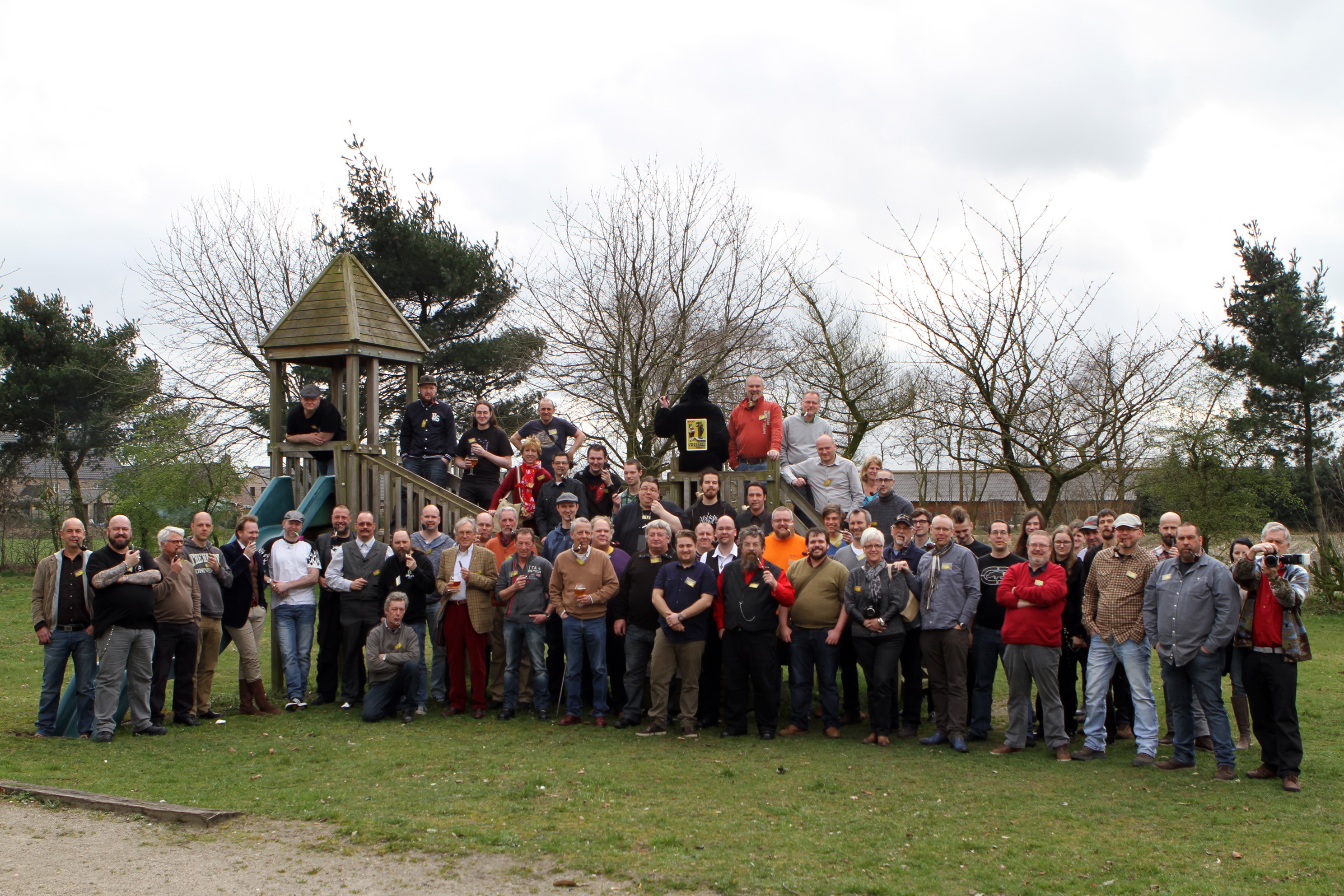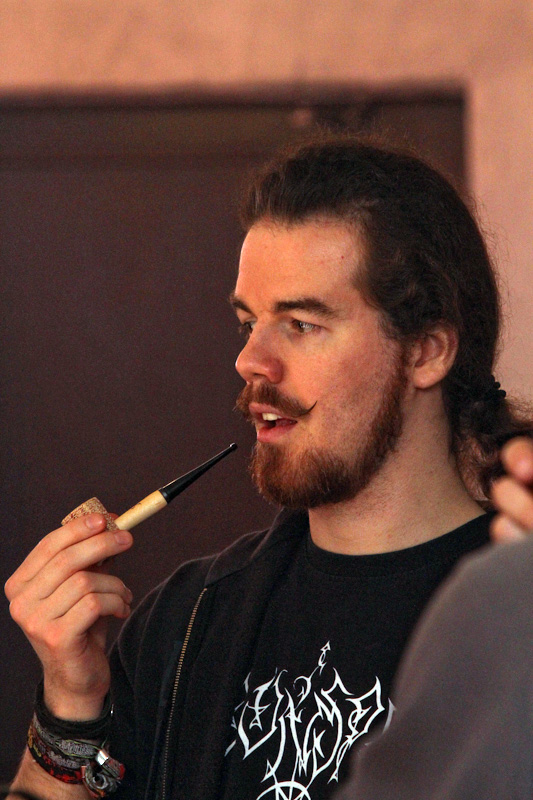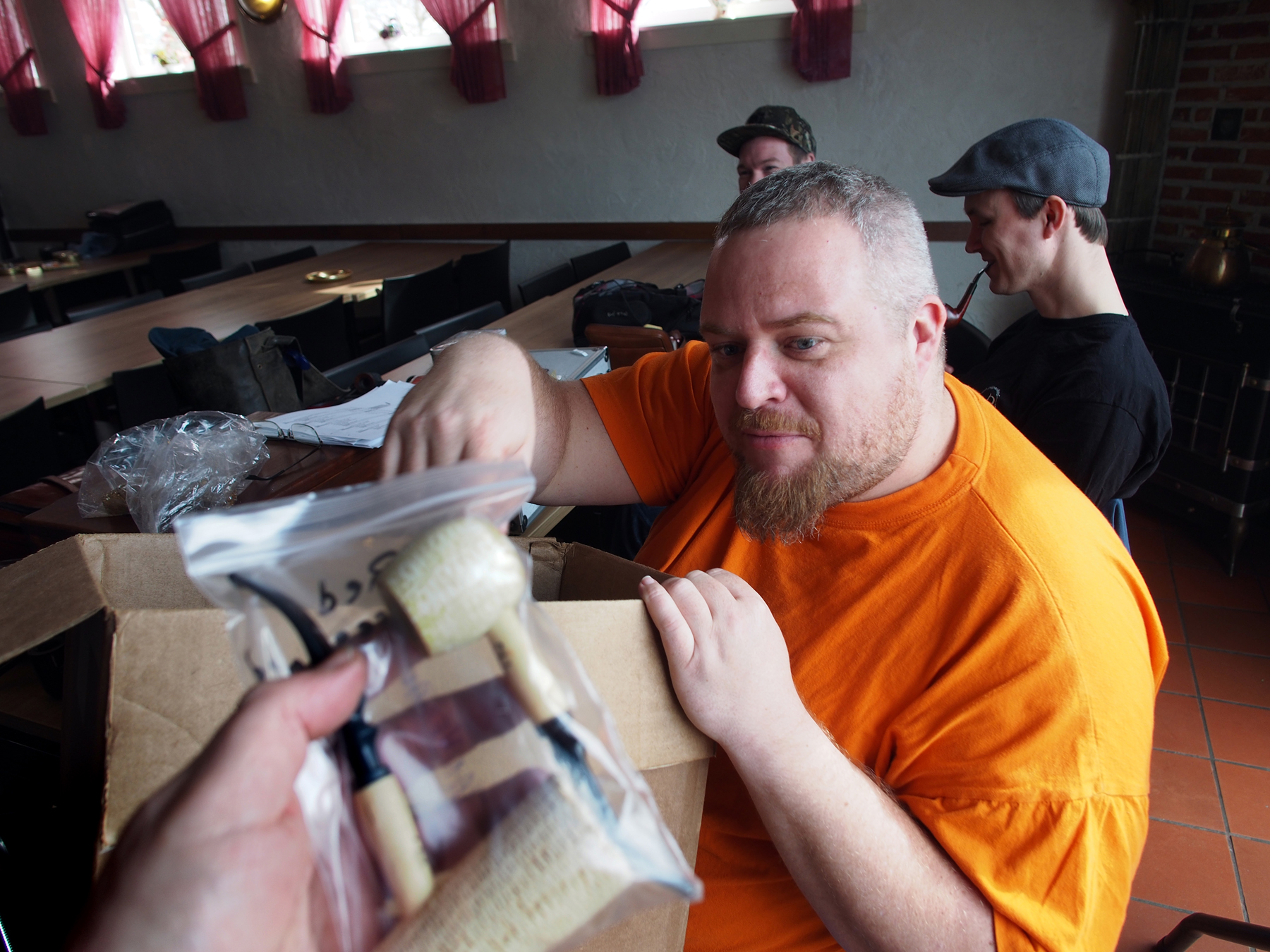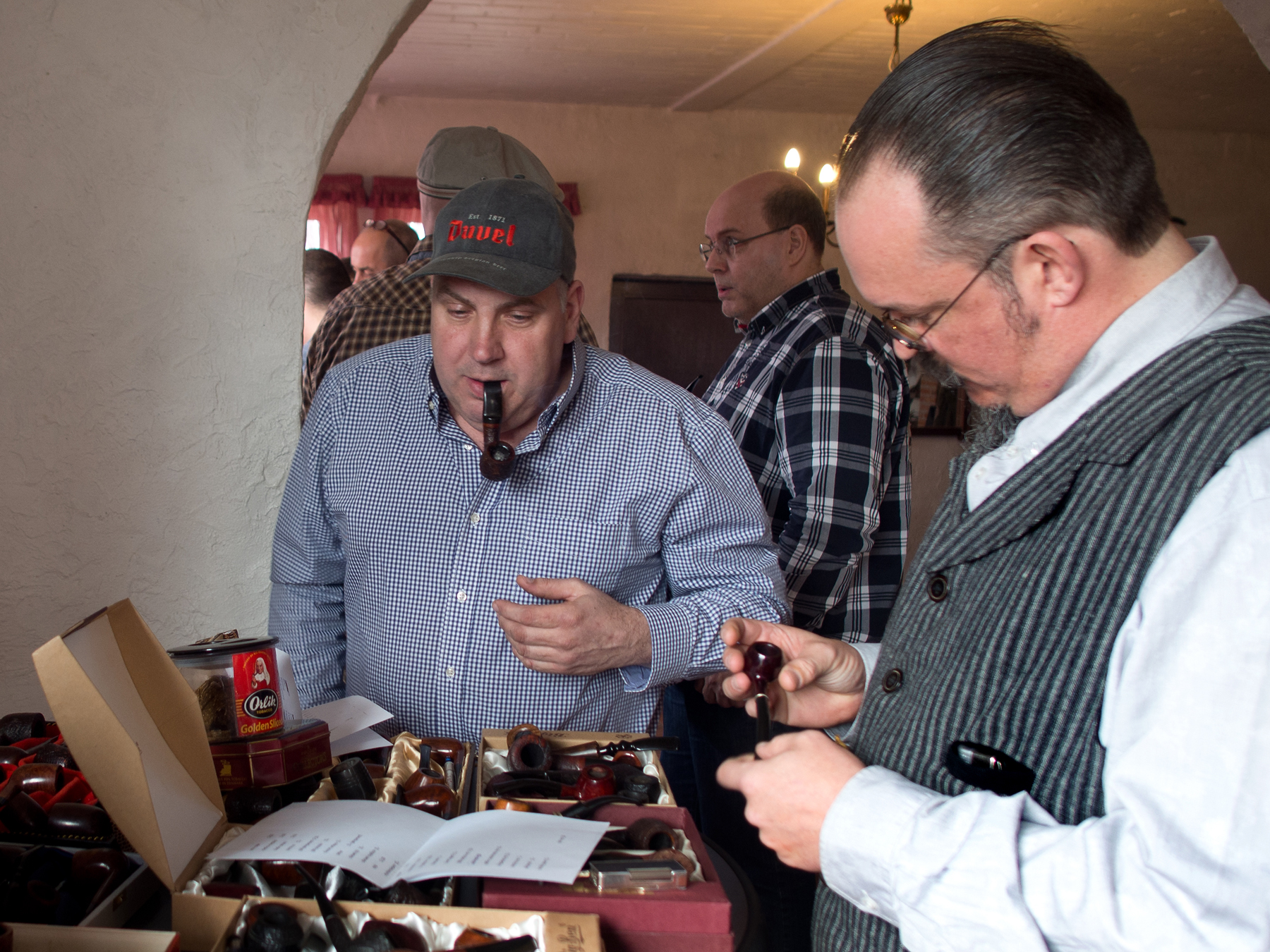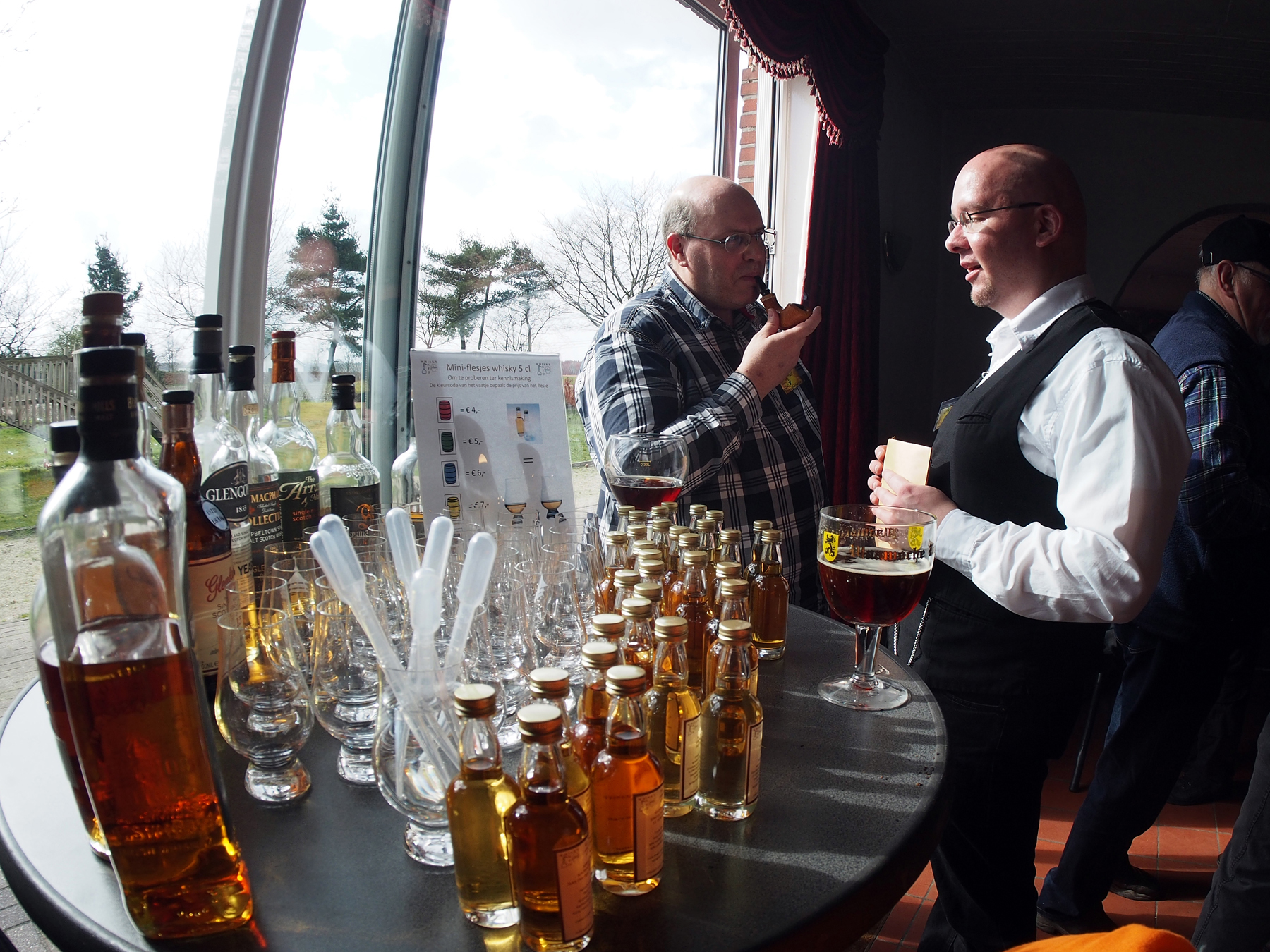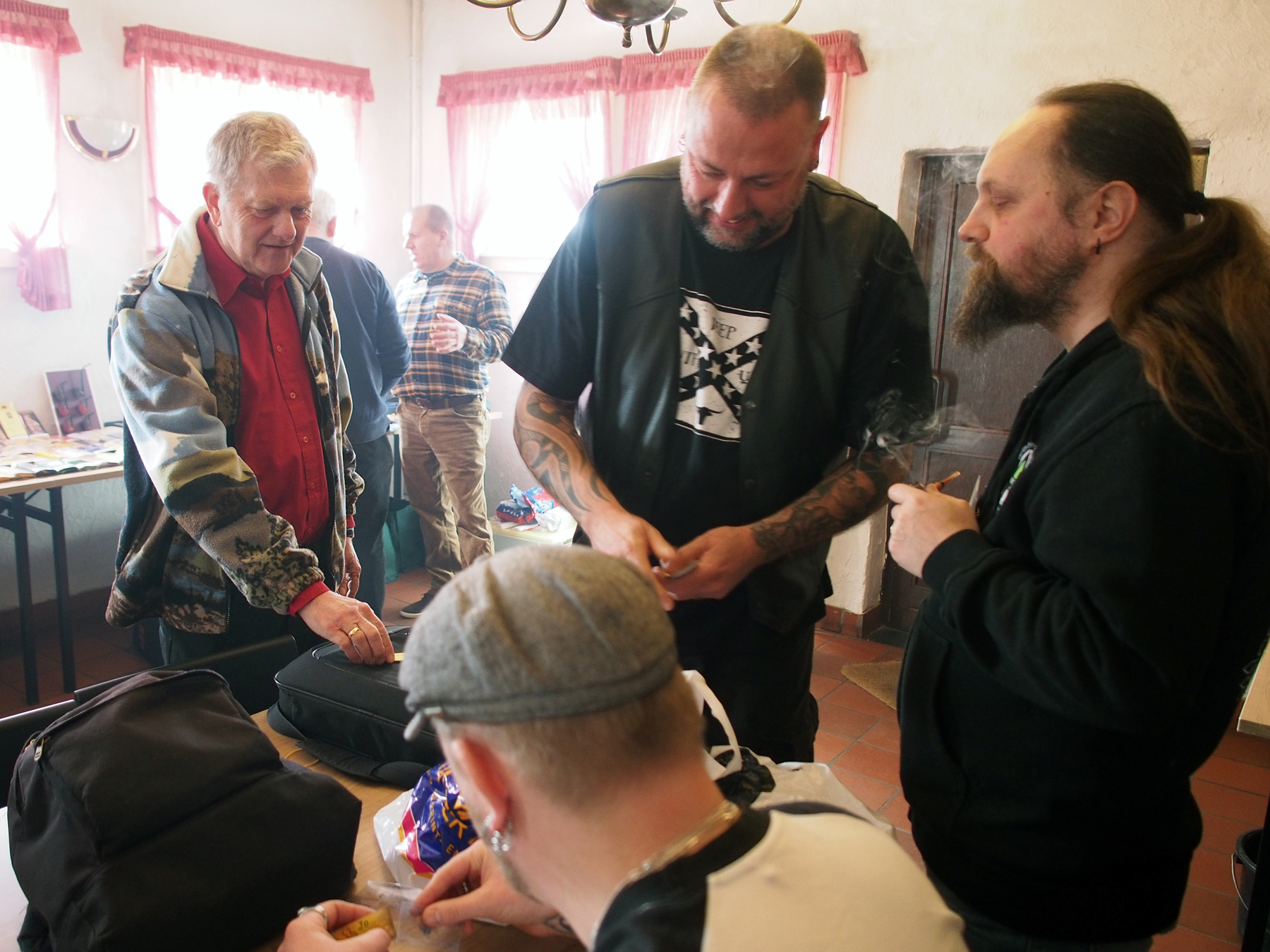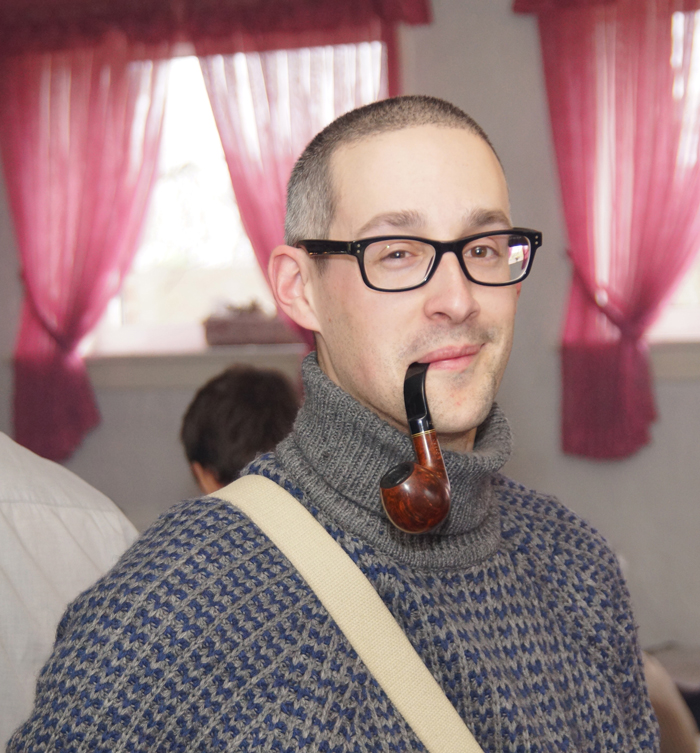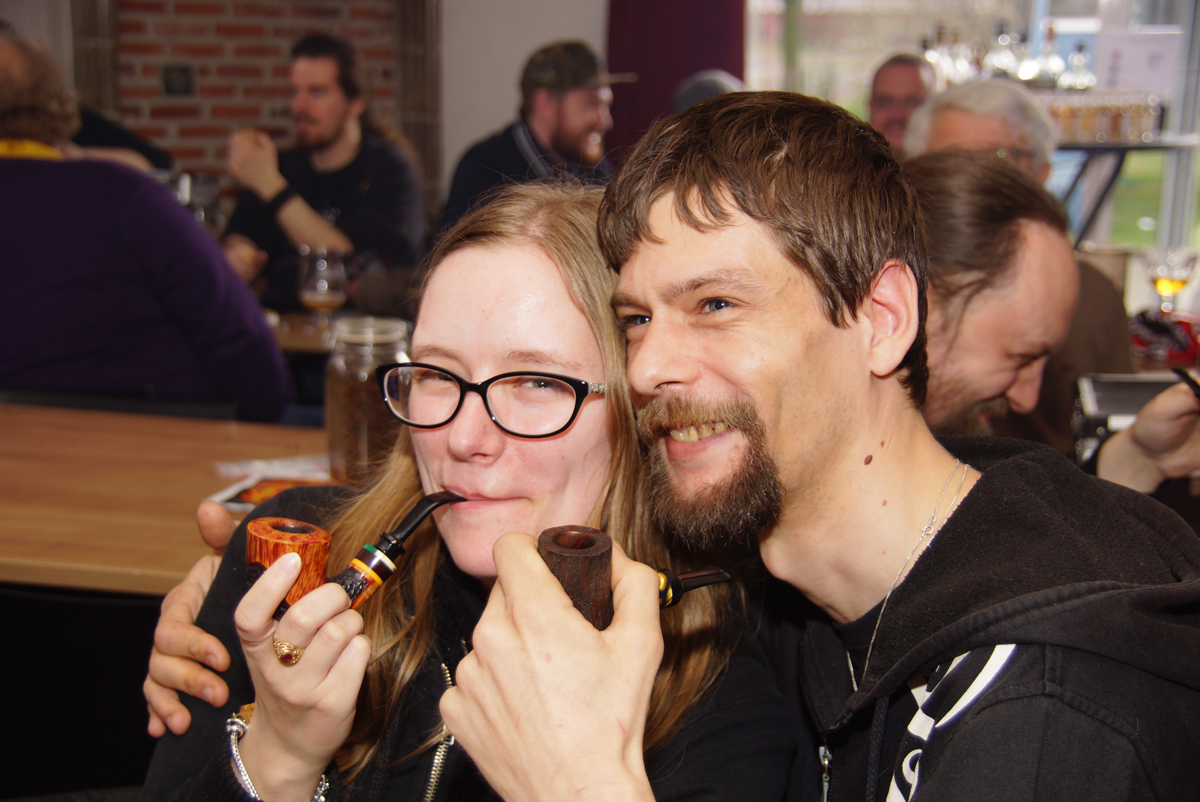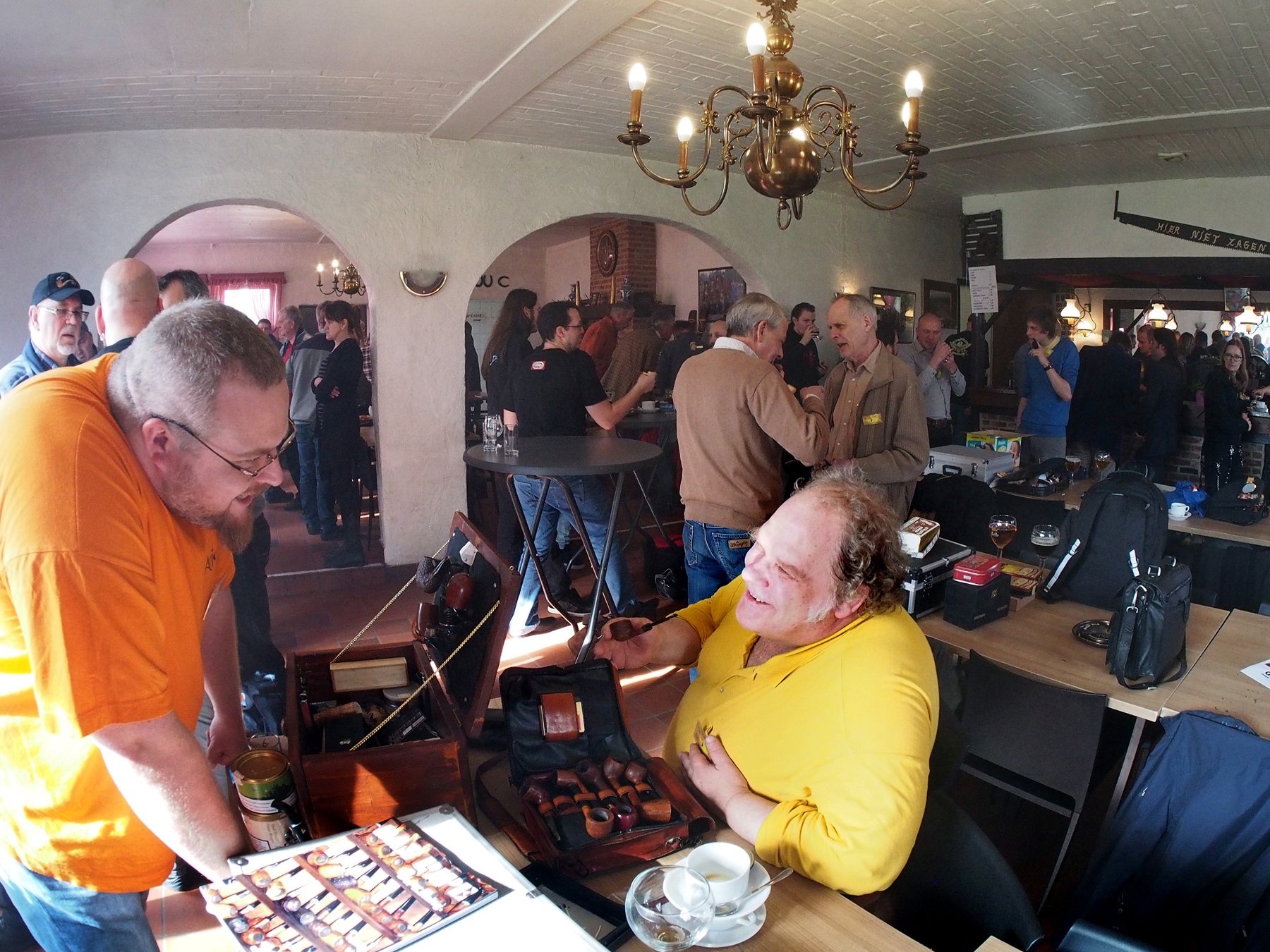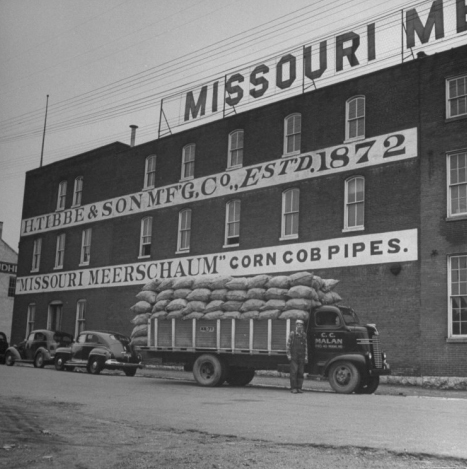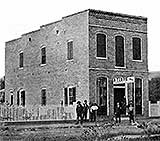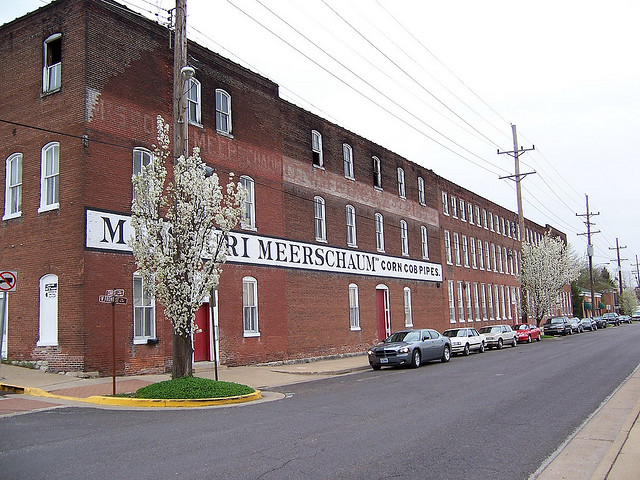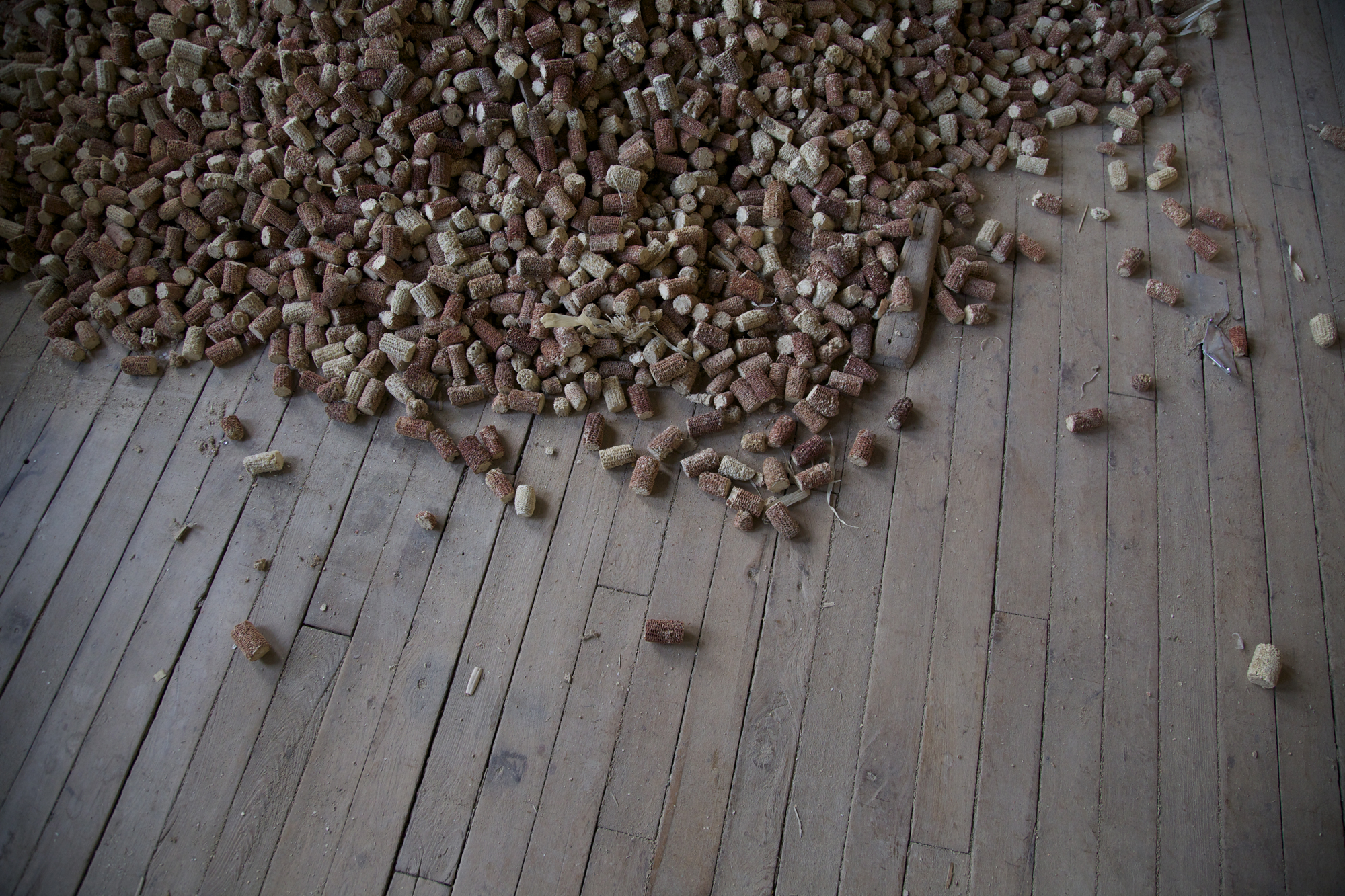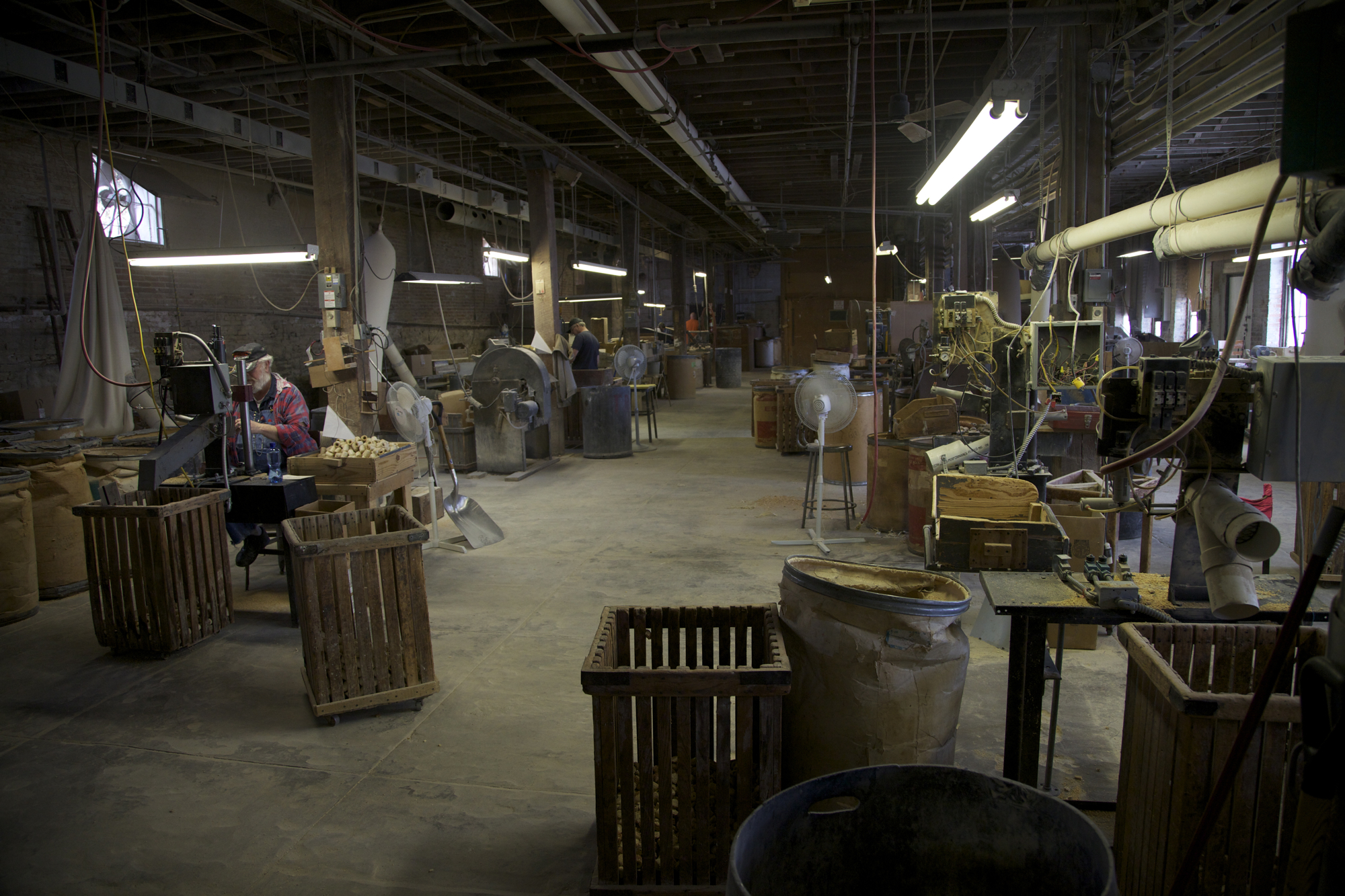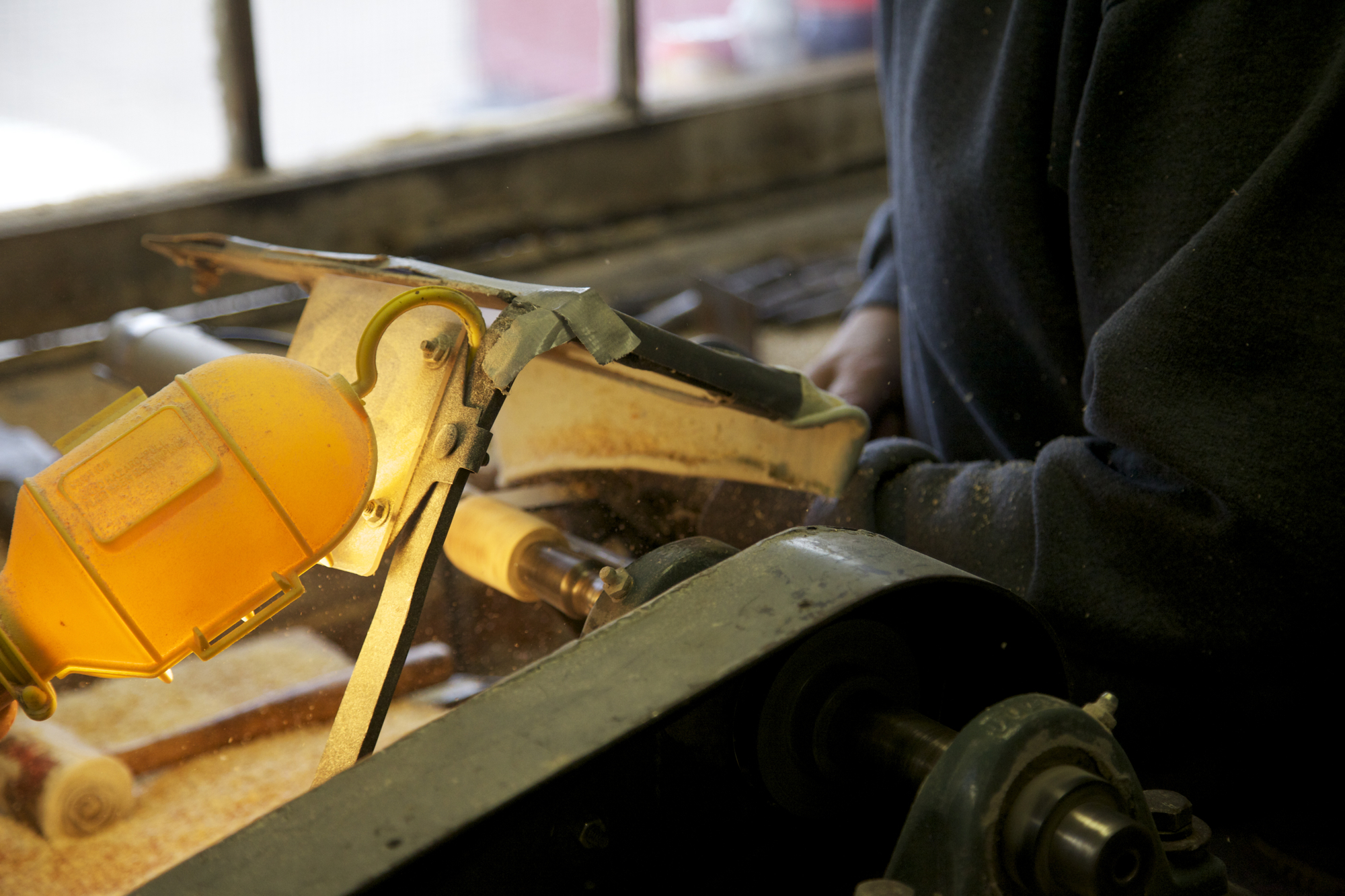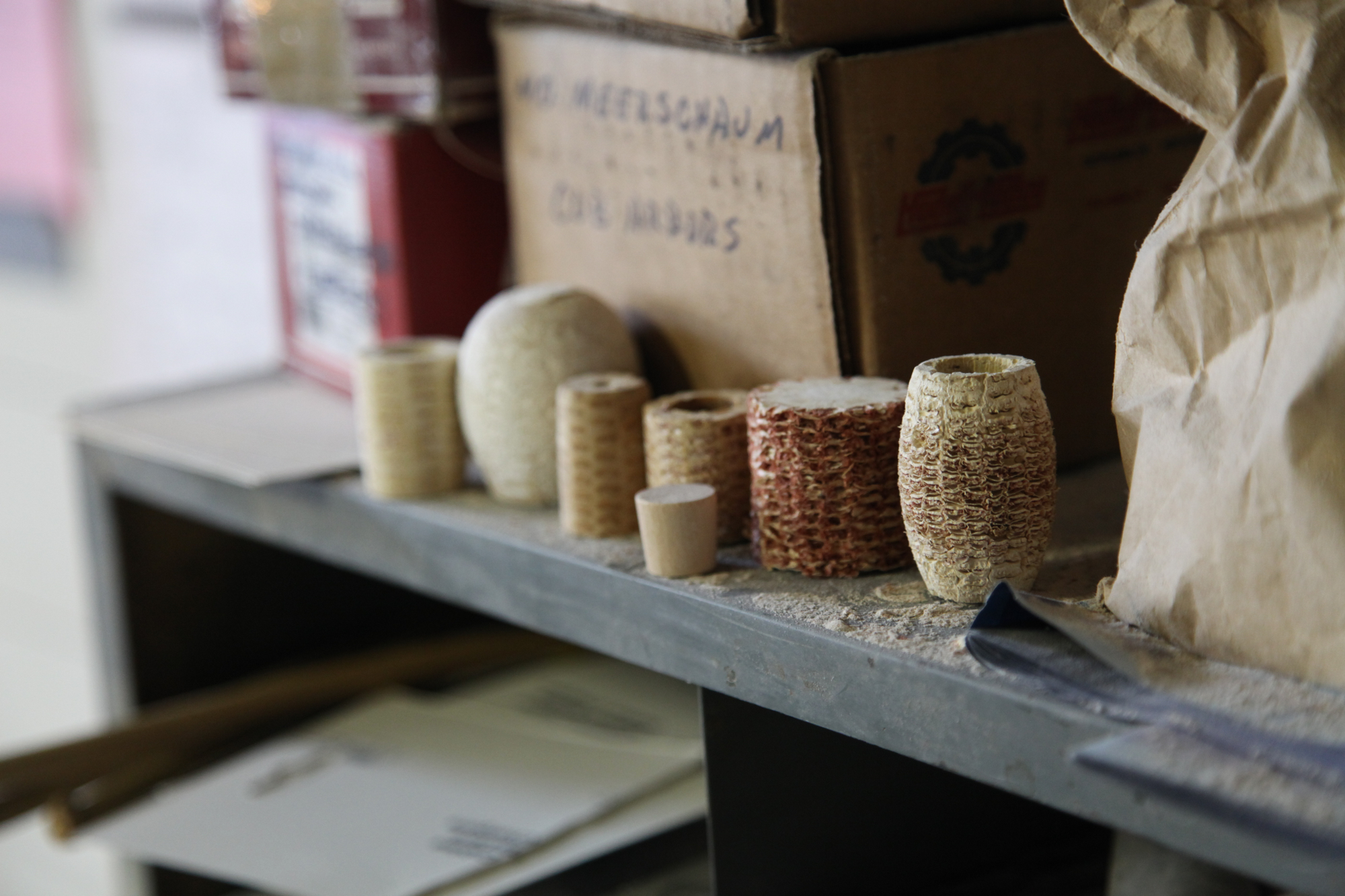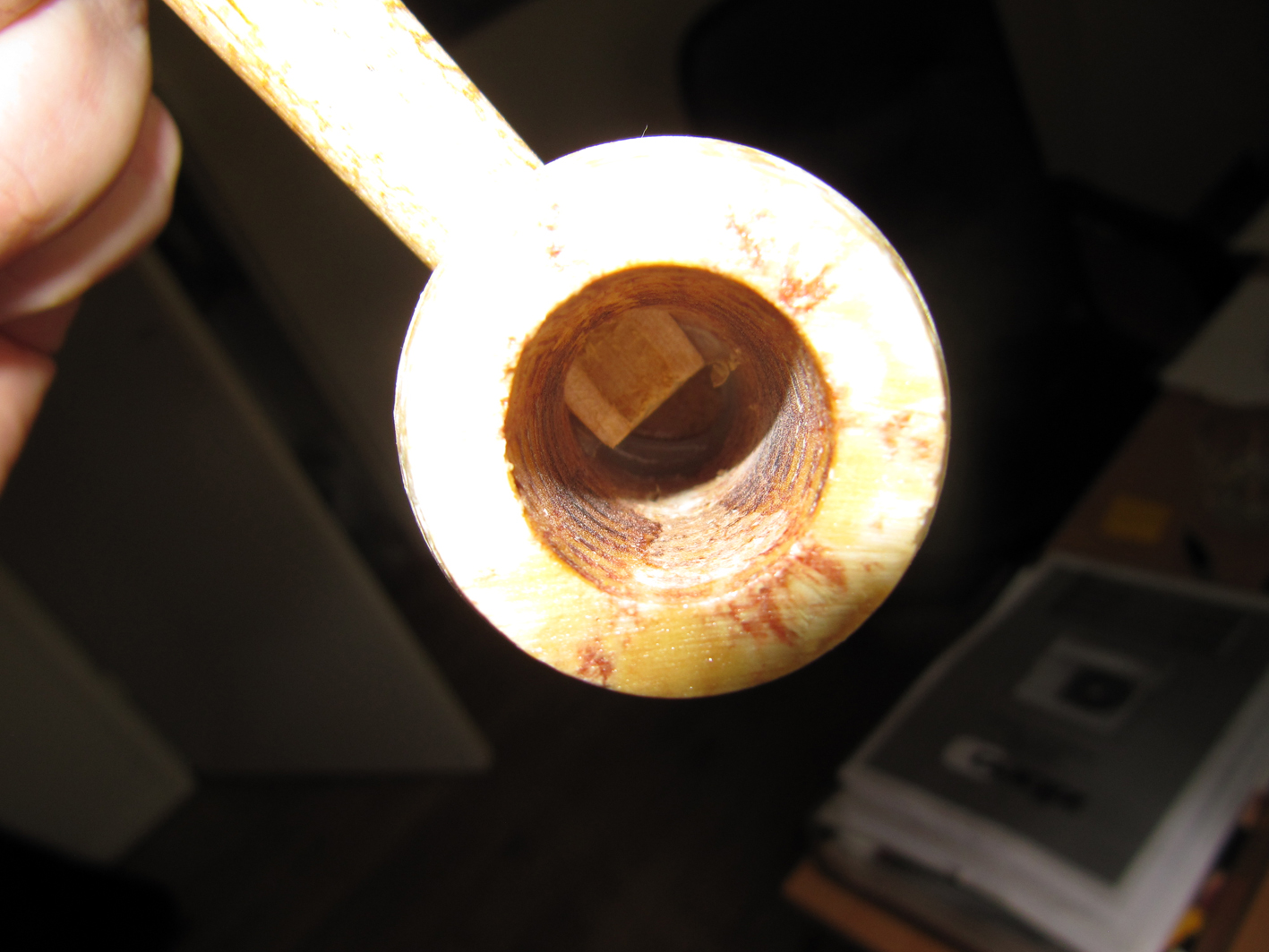Saturday 15 March it was time for the 2nd (for the first one, see here) annual Dutch/Belgian Pipe Smokers Forum meeting in Wuustwezel, Belgium. For weeks the forum had been buzzing with anticipation because it was going to be the biggest meeting yet. About 70 people were coming to the farm in the outskirts of the tiny town! Reason for this is, I think, because Wuustwezel is in Belgium but near the Dutch border. So it is very accessible for forum-members from both countries.
The day of the meeting I awoke early and after a shower and breakfast I started to pack, I had a long list of things to do.. My girlfriend Ellen had to laugh, she thought I behaved like I was going on a field trip. Well, it surely felt a bit that way. Around 10.15 the bell rang, it was Ed who was going to pick me up. After a cup of coffee we drove to Deventer Central Station where we were, once again, going to pick up Mark. For a change his train was on time, he was already waiting for us. We had one more member to pick up: Johnny (nickname: The Undertaker, after my favourite WWE wrestler). He had conveniently parked his car at a big parking place near the highway so with almost no delay he joined us and we could continue the journey to Belgium.
 With me I brought a bag of empty Belgian beer bottles so I could return them at a liquor store for their deposit. In Belgium alcohol is much cheaper then in The Netherlands (as is tobacco) and since my supply of Belgium beers was running dangerously low a visit to the local liquor store in Wuustwezel was mandatory. We were a bit early thanks to the lead foot of Ed so I had all the time to explore the immense store. Yes, immense! I have never seen a liquor store that big! Alcohol Valhalla! Whoohoo! After a bit of looking around we came to the section of the Belgian beers. In my head I had a list of them which included brands like St. Bernardus, Corsendonk, Chimay, Ciney, I’m getting thirsty now, Rochefort, Barbãr Bok, Kasteel Rouge and Julius. Happy as a child I filled my cart with bottles and went to the pay desk. €53 for the vast amount of beer I had put together was NOT much! In the Netherlands I surely would have paid around €100.. So that fact made this cheap Dutchman very happy.
With me I brought a bag of empty Belgian beer bottles so I could return them at a liquor store for their deposit. In Belgium alcohol is much cheaper then in The Netherlands (as is tobacco) and since my supply of Belgium beers was running dangerously low a visit to the local liquor store in Wuustwezel was mandatory. We were a bit early thanks to the lead foot of Ed so I had all the time to explore the immense store. Yes, immense! I have never seen a liquor store that big! Alcohol Valhalla! Whoohoo! After a bit of looking around we came to the section of the Belgian beers. In my head I had a list of them which included brands like St. Bernardus, Corsendonk, Chimay, Ciney, I’m getting thirsty now, Rochefort, Barbãr Bok, Kasteel Rouge and Julius. Happy as a child I filled my cart with bottles and went to the pay desk. €53 for the vast amount of beer I had put together was NOT much! In the Netherlands I surely would have paid around €100.. So that fact made this cheap Dutchman very happy.
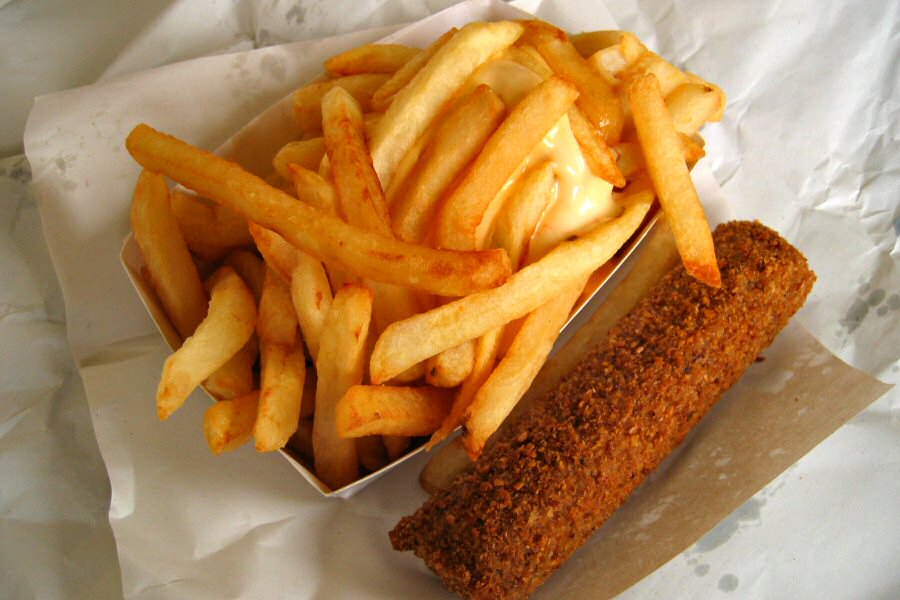 A lesson we learned from last year was that we had to have lunch before the meeting. Since Belgium is also famous for its fries (no not the skinny French fries but a somewhat thicker version) we decided to go to a snack-bar alongside the road. It was around 1 o’clock so we were the only customers. Most of us ordered fries and an extra snack, mine was a croquette. The friendly lady behind the desk asked if I wanted Belgian mayonnaise with my fries or Dutch. Hmm.. Belgian mayonnaise is sour and Dutch is sweet. I am bit ashamed to say this but I choose the Dutch mayonnaise. Usually when I am in a different country I adapt to the food that is being eaten there. But I really do not like sour mayonnaise.. Sorry!
A lesson we learned from last year was that we had to have lunch before the meeting. Since Belgium is also famous for its fries (no not the skinny French fries but a somewhat thicker version) we decided to go to a snack-bar alongside the road. It was around 1 o’clock so we were the only customers. Most of us ordered fries and an extra snack, mine was a croquette. The friendly lady behind the desk asked if I wanted Belgian mayonnaise with my fries or Dutch. Hmm.. Belgian mayonnaise is sour and Dutch is sweet. I am bit ashamed to say this but I choose the Dutch mayonnaise. Usually when I am in a different country I adapt to the food that is being eaten there. But I really do not like sour mayonnaise.. Sorry!
After we had filled our bellies it was finally time to go to the meeting. At the farm lots of cars were parked and when we did go inside the crowd already was large. First went to the table where Shaun and Jan were sitting. They were collecting the cash for the rent of the farm and the sausage rolls which would come in later. A new member, Willem (nickname: Meester W.), also stood at the table. We shook hands and I made a mental note to look him up later. Unfortunately he went away early, he had some other things to do so I never got the chance to really speak to him.
I wanted to place my bag with smoking gear and tobaccos somewhere so I could fill a pipe when I was stopped by Arjen (nickname: Bananabox-Ninja). In the months before the meeting he had arranged Missouri Meerschaum corncobs with the forum logo for forum-members. I had ordered a Country Gentleman together with some some black Danish bits which he gave to me. I tend to gnaw a bit on my mouthpieces so some spare bits were very welcome. But I also had something for him. Due to a sharp eye-tooth there was a hole in the mouthpiece of one of my GBD princes. Arjen learned a method from Steve from Reborn Pipes where you fill up holes like that with some kind of glue. I hope it works! (EDIT 15 May 2014: Arjen has done an incredible job with the mouthpiece and it looks like new!)
When I had put my bag away I finally could light up a pipe and talk to some people. I had some things for them and other people had things for me. Jorg tapped me on my shoulder, he had a generous sample of Davidoff Flake Medallions for me. I had never tried it but after having recently smoked a couple of bowls of it, it now is on my wanted list. Thanks Jorg! When I saw forum administrator Nick (nickname: Massis) we shook hands. He had a bouchon de Semois and asked if I still had those. No, I gave away my last one to Kevin, the owner of PipesMagazine.com. So he graciously gave me a bouchon. When I turned around Carro asked what I was holding. I answered it was a bouchon de Semois and explained how one should smoke it. Of course I gave it to him and got a pint of Vlaamse Leeuw beer in return. Then I bumped into Dre (nickname: Annie69) and he had a sealed tin of vintage De Graaff perique for me! A gift from a friend of him and fellow forum member Ignoro, who could not attend the meeting. So thanks Ignoro!
Near the sliding door at the corner of the room Paul had set up a small table with all kinds of whiskeys for everyone to sample. Very nice but I decided not to taste any of the “water of life”. That could not have turned out well for me in combination with the heavy Belgium beers. Once in a while Paul orders at Dan Tobacco in Germany and people of the forum can add their wishes to his list. So that way I ordered a tin of Skipper’s Flake through him only to discover that he bought a tin of Skipper Special Navy Cut Mellow Mixture instead. Whoops! Luckily I did not have to pay for that tin and on top of that, as a surprise, he gave me a tin of… Skipper’s Flake! Thank you Paul!
In the distance I spotted Klaas (nickname: Upper Ten), I still had his forum-tobaccos. “Keep them until the Wuustwezel meeting, that saves me the postal costs.” He said. “I have enough tobaccos in my treasure chamber to go by”. Which is true, he really has a tobacco treasure chamber. For years Klaas invested in his tobacco collection by buying brands like Upper Ten (hence his nickname), De Graaff (the famous house-blends of the De Graaff store in The Hague) and Balkan Sobranie. The first time I smoked that legendary blend it was from a pouch which he gave me. Klaas has a fondness for latakia so I had a sample of GL pease Gaslight for him. It has a kind of cigar-like heaviness which could be just Klaas his cup of tea. I also gave him a sample of Heinrichs Curly Block. At my visit to Heinrichs I bought a tin of Dunhill Deluxe Navy Rolls for him because he wanted an impression of the taste of current production Escudo. He did not like it very much, in his memory the old Cope Escudo version was way better. Unfortunately he did not stock up on that one.. But according to lots of German pipe-smokers the Curly Block is similar to the Cope Escudo. So I am curious what Klaas thinks of this tobacco.
At the meeting there were lots of new members who had never attended such an event. Geoff was one of them. He approached me and said he was a fan of this blog, how nice! Normally I am having a hard with speaking to people I do not know, but with pipe-smokers you always have something to talk about: pipe-smoking! Duh! He said he had an avatar of a smoking monkey but that did not shone a light in my brain. It was not until later, back home, that I saw him on the forum. Ahh!! The smoking monkey avatar! It was nice talking to you Geoff! Another new member, Rinus, asked me if I was the one who knew a lot of tobaccos. Well.. I do not know a lot, but I do know something. Rinus discovered he had a fondness for latakia. He was missing something in the blends he bought and found out that was the dark leaf. So I made a list for him with mixtures containing latakia that are available in The Netherlands. I hope he finds something he likes.
Then I had something special. I approached Martin and asked if he could help opening a 90-year old tin of Capstan Navy Flake. Well, he is an old Dutch marine man so if someone could do that job, it was him. I grabbed my camera and just at the moment Martin pierced through the foil of the knife-cutter tin my battery died.. Arghh!! Luckily Martin was able to make some pictures with his smartphone. But those will be for a another blog-post. Astoundingly the condition of the tobacco inside the tin was perfect! I had brought a mason jar with me and quickly transferred the contents. In the mean time Dwayne had joined Martin and me. He his an American pipe-maker who now lives in The Netherlands and was also amazed about the vintage Capstan. Needless to say both could fill up their pipes with this old treasure.
When ordering a beer at he bar I saw Tommy. We had e-mailed a couple of times before because one of his hobbies is to sing and write lyrics for songs. Only, he can’t make the music that would go with those so he asked on the forum if someone could help him with that. I have made music for years so I definitely was interested. When singing Tommy has a warm, baritone voice that resembles the one of Dutch artist Ramses Shaffy. What followed was an animated conversation about our passion for music. When I have the time I will definitely try to make some music to match the lyrics.
After dinner, which existed once again of the delicious Belgian sausage rolls, I sat down. My feet were hurting from standing and walking around. I already talked to so many people. I joined a group who was talking about buying tobacco abroad, which I frequently do. The big man next to me said if he could get all the tobaccos he wanted in The Netherlands he would buy them there. An honest opinion. I detected a strange accent in his soft voice and asked if had lived abroad for a period of time. Franz (that is his name, nickname: Dinck) told me he was born in Buenos Aires, Argentina, but already lived for quite some time in The Netherlands. While talking my eye suddenly went to his pipe-bag. With a smile he took a couple of pipes out of it. All of them were made in England. It appeared we both had a passion for English pipes. Only, I (try to) collect Dunhills, he collected everything but Dunhill. He pulled out a Sasieni prince which made me drool. Immediately I, quasi joking, asked for how much I could buy it from him. Of course it was not for sale. Damnit! I hope it brings him great smoking pleasure.
Too fast the hours crawled away, when you are having fun time always goes (too) fast. Hora ruit tempus fluit! So the time came to say goodbye. We thanked Jan, his wife Sas and Dirk and Miep who had stood behind the bar the whole day. The journey back went swiftly and before I knew it I stood before Ellen, who had fallen asleep on the couch and slowly woke up. “How was your day?” “It was wonderful darling.”
Big thanks to Ed for driving, to Johnny and Mark for the conversations in the car, to Jan and Sas for the organisation and everyone I talked to! I can’t remember who took which photo so all pictures from the meeting were made by Klaas, Janneman, Dirk, Mark, Rik and myself.

